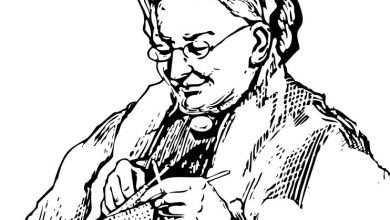South African activist and writer Jeremy Cronin’s powerful composition “To learn how to speak” was first published in his collection Inside in 1983. His verse is affiliated with multiple aspects of South Africa’s eventful history. The poem keenly draws attention to the dynamic relationship between land and language through the trope of progression. In his distinctive style, the poet opts for a third-person omniscient speaker for the first half of the poem and a first-person for the latter half who revels in his nation’s progress in different segments. The celebration of unity and an ardent desire to achieve great heights marks the mood of this work in a surfacing positive tone. However, the poem lacks stanzas and it is written in free verse to articulate the flow of thoughts natural to the human mind. The play on language with the inclusion of structurally incomplete sentences reveals the ever-evolving nature of linguistic studies.
To learn how to speak | Summary and Analysis
To Learn How to Speak | Analysis, Lines 1-7
To learn how to speak
With the voices of the land
To parse the speech in its rivers,
To catch in the inarticulate grunt,
Stammer, call, cry, babble, tongue’s knot
A sense of the stoniness of these stones
From which all words are cut.
The poem commences with the speaker’s desire to learn the way of Afrikaners in their speech and dialect. The “voices” refer to the people of South Africa and the phrase “voices of the land” is an act of personification where the land equates to an entity possessing its own voice. A language is rooted in its own land and culture and thus stems out of it. Learning a language involves various stages and each stage requires concentrated efforts. It is broken into segments to enable an individual study of its components. The speaker thus proposes to “parse” i.e. divide the language into its different elements like the rivers of the land as a metaphoric expression.
Further, the “inarticulate grunt” suggests the smallest unit of a language that lacks an utterance of a proper word. Often, only learning the words does not suffice the requirements of learning a language as a whole. The gestures, expressions, and sounds too contribute to a language. “To catch” hints at the pace of the learning which might be too fast or too slow for new learners who like a child begin to participate in the language through stammering, crying, and babbling at early stages.
The second last line employs creative use of sibilance to portray the early stages of learning a language in its resemblance to ancient times. In this case, it is a literal reference to the Stone Age when communication was subject to harsh sounds and signs. Words are compared to stones as the smallest component of language and land respectively and the last line paves way for the unending progress of time and language that humans find themselves a part of.
To Learn How to Speak | Analysis, Lines 8-13
To trace with the tongue wagon-trails
Saying the suffix of their aches in –kuil, -pan, -fontein,
In watery names that confirm
The dryness of their ways.
To visit the places of occlusion, or the lick
in a vlei-bank dawn.
The metaphor of journey marks the initial line of this set that substantiates the advancement of the language with “tongue” and the historical movement of Dutch settlers moving from coastal to the inland settings of South Africa.
Afrikaners have their own vocabulary which one can observe in the words like “kuil, pan, fontein”- all water-related terms. The buoyancy of these words contrasts the dryness of their lifestyle. Dryness addresses the sandy terrain of Africa as well as the unemotional conduct of its settlers.
The connection between a water body and language continues as the speaker alerts about the blockages one has to experience while learning a language and the dire need to “lick” the dryness of the mouth to enhance the speech like a rainy season’s pool of water (“vlei”).
To Learn How to Speak | Analysis, Lines 14-20
To bury my mouth in the pit of your arm,
In that planetarium,
pectoral beginning to the nub of time
Down there close to the water-table, to feel
The full moon as it drums
At the back of my throat
Its cow-skinned vowel.
The speaker proceeds with a first-person address for the first time in the poem. The expression “bury my mouth in the pit of your arm” draws an image of asking for solace in one’s bosom like a shelter. It can also refer to the unification of language and land-like parts of the same body which seek oneness. Planetarium indicates the measurement of time through stars which is the earliest method in existence to follow time. Similarly, language first emerged from the human conscience.
Also, right from the sky, the speaker takes the readers to the underground by its reference to the “water table” which is a natural cyclic process in existence since time immemorial. An artistic conjoining of cosmic elements with language gives the latter a universal significance. Drums are penned as a metaphor for the moon and the beats one plays on it as “cow-skinned vowels.” The language thus flows like musical notes once a man comprehends it from his heart.
To Learn How to Speak | Analysis, Lines 21-33
To write a poem with words like:
I’m telling you,
Stompie, stickfast, golovan,
Songololo, just boomband, just
To understand the least inflections,
To voice without swallowing
Syllables born in tin shacks, or catch
The 5.15 ikwata bust fife
Chwannisberg train, to reach
The low chant of the mine gang’s
Mineral glow of our people’s unbreakable resolve.
To learn how to speak
With the voices of this land.
The last set of lines is meta-writing in nature as it calls to attention the act of writing a poem itself. It is instructive as the speaker adopts a commanding tone in the phrase “I’m telling you.” There is a tracing of change in language and themes in poetry that now incorporates political issues like apartheid and modern colloquial inflections associated with it.
The development of railways, mining, and industrial setups exhibit growth on one hand but also highlight the unison of black men on the other against the segregation system. It is a matter of common knowledge that workers for these corporations constituted mostly the black population. They are the true backbone of South Africa’s bustling growth and progress. To be a truly South African compels one to integrate with the blacks as one and fight against injustice. It also encourages them to speak their language through words, thoughts, and actions. The poem thus ends with the same couplet as the beginning which acts as a refrain to encompass the crux of this composition i.e. learn to raise your voice and speak against discrimination.


